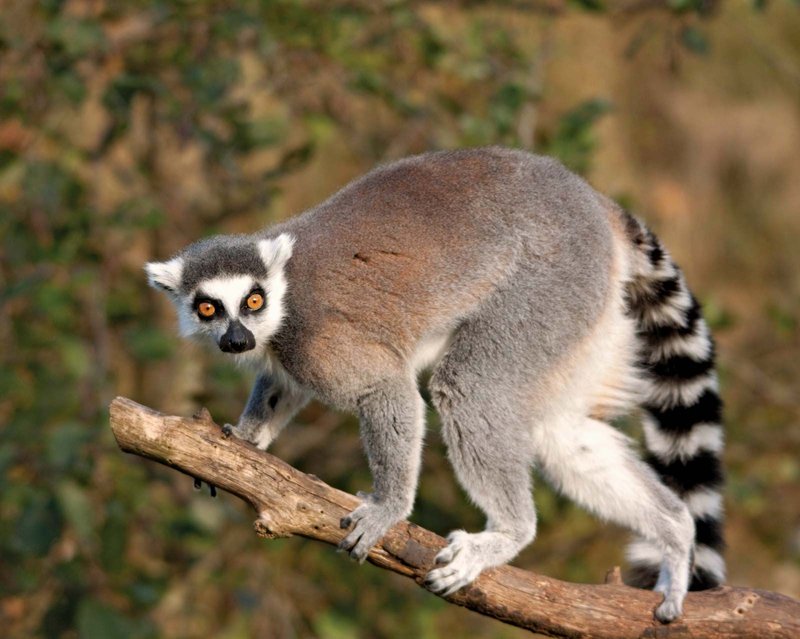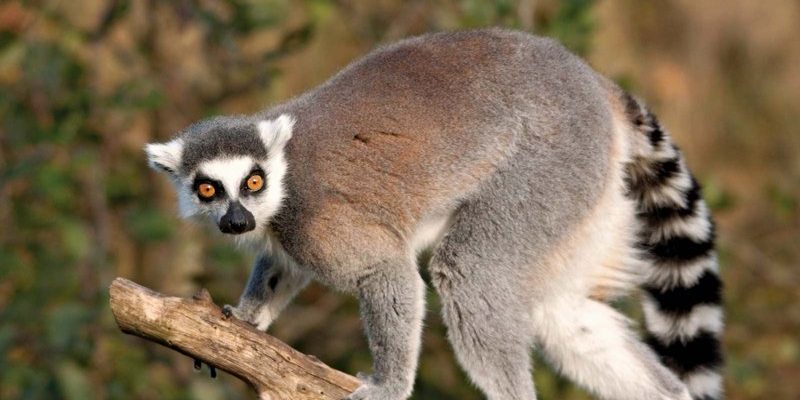
Lemurs are not just cute faces; they’re vital for the health of the forests they call home. Imagine walking through a lush forest, every plant and animal working together. Lemurs help keep that balance thriving. They’re primarily found in Madagascar, where their behaviors and habits have evolved to create a special ecological niche. Understanding this ecological role of lemurs gives us insights into the importance of conservation efforts. So, let’s dive deeper into the fascinating world of lemurs and discover how they contribute to their ecosystems.
Lemurs as Seed Dispersers
One of the most significant roles lemurs play in their ecosystem is acting as seed dispersers. Think of them as nature’s little farmers. When lemurs eat fruit, they don’t always digest the seeds. Instead, these seeds pass right through their bodies and get dropped in a new location. This is great for plants because it helps them spread and grow in different areas. By doing this, lemurs contribute to forest regeneration.
For example, the black-and-white ruffed lemur is known for eating large fruits of the ramy tree. When they consume these fruits, they help the tree’s seeds travel away from the parent tree. This helps the tree population thrive and ensures a diverse range of plant life. The more diverse the plant life, the healthier the ecosystem, providing better habitats for various animals and insects. It’s a perfect reminder of how interconnected everything is in nature.
Maintaining Forest Health
Lemurs contribute to maintaining forest health in other ways as well. By feeding on leaves, fruits, and flowers, they help control plant growth. If a particular plant species becomes too dominant, it can choke out others, which can lead to decreased biodiversity. Lemurs nibble on these plants, ensuring a balanced ecosystem.
Additionally, when lemurs forage, they create paths through the underbrush. These paths can benefit other animals by allowing easier access to food and resources. This means that lemurs are not just eating; they’re also helping other creatures find their way in a sometimes confusing environment. Imagine this as a highway system for the forest—without the lemurs, some of these routes might never exist, making it harder for other animals to thrive.
Interactions with Other Species
Lemurs also interact with other species in their ecosystem, creating complex relationships that benefit various organisms. For instance, when lemurs eat fruits, they’re not just feeding themselves; they’re affecting the animal kingdom around them. The seeds they disperse provide food for insects, birds, and even mammals, creating a food web that supports many life forms.
Moreover, lemurs are prey for larger predators like hawks and fossa (a cat-like mammal). This predator-prey relationship is essential to maintain the balance within the ecosystem. Without lemurs, these predators would struggle to find food, and their populations might decline. This dynamic shows how every creature, no matter how small, has a role to play. By simply existing, lemurs support a whole host of life around them.
Impacts of Habitat Loss on Lemurs
As charming as they are, lemurs face significant threats to their survival. One of the biggest threats is habitat loss due to deforestation. When forests are cut down for agriculture or logging, lemurs lose their homes and food sources, leading to declining populations. This loss can ripple through the ecosystem.
Without lemurs, seed dispersal decreases, which can lead to fewer plants growing. Less vegetation means less food for other animals, creating a domino effect. Honestly, it’s alarming to think about how quickly these changes can happen. Preserving lemurs and their habitats is vital for maintaining biodiversity and ecosystem health. Conservation efforts become not just about saving a species but about protecting an entire ecosystem from collapse.
Conservation Efforts and Their Importance
Given their crucial role in the ecosystem, conserving lemurs is essential. Several organizations work tirelessly to protect these creatures and their habitats in Madagascar. Conservation strategies typically include reforestation efforts, community education, and creating protected areas where lemurs can thrive without human interference.
Communities play a significant role in these conservation efforts. By raising awareness about the importance of lemurs, locals can help foster a culture of respect for wildlife. For instance, ecotourism can provide economic benefits while encouraging visitors to appreciate and protect Madagascar’s unique ecosystems. When people understand how vital lemurs are, they’re more likely to support conservation efforts.
The Role of Lemurs in Scientific Research
Lemurs also contribute to scientific research, providing insights into evolution, behavior, and conservation biology. Researchers study lemurs to understand their social structures, mating rituals, and communal living. Their unique evolutionary path as Madagascar’s only primate species offers clues to how isolation can shape a species over time.
For example, lemurs have developed extraordinary adaptations to their environment. Studying these adaptations can help scientists understand resilience in the face of changing climates and habitats. This not only helps us learn more about lemurs but can also inform broader conservation strategies. The knowledge gained from studying these creatures extends beyond their survival, offering a deeper understanding of our planet and its ecosystems.
Final Thoughts on Lemurs and Their Ecosystem
Lemurs are more than just a cute face in the animal kingdom; they’re essential players in maintaining the balance of their ecosystems. They act as seed dispersers, help control plant growth, and interact with numerous species, showcasing the interconnectedness of life. Understanding their role emphasizes the urgency of conservation efforts to protect these remarkable creatures and their habitats.
As we continue to explore the wonders of the natural world, let’s remember that every species, including lemurs, has a part to play. By supporting conservation initiatives and spreading awareness, we can help ensure that future generations can experience the magic of lemurs and the ecosystems they nurture. Their plight is a reflection of our shared responsibility to protect the richness of life on our planet—because when one piece of the puzzle is missing, the whole picture starts to fall apart.

